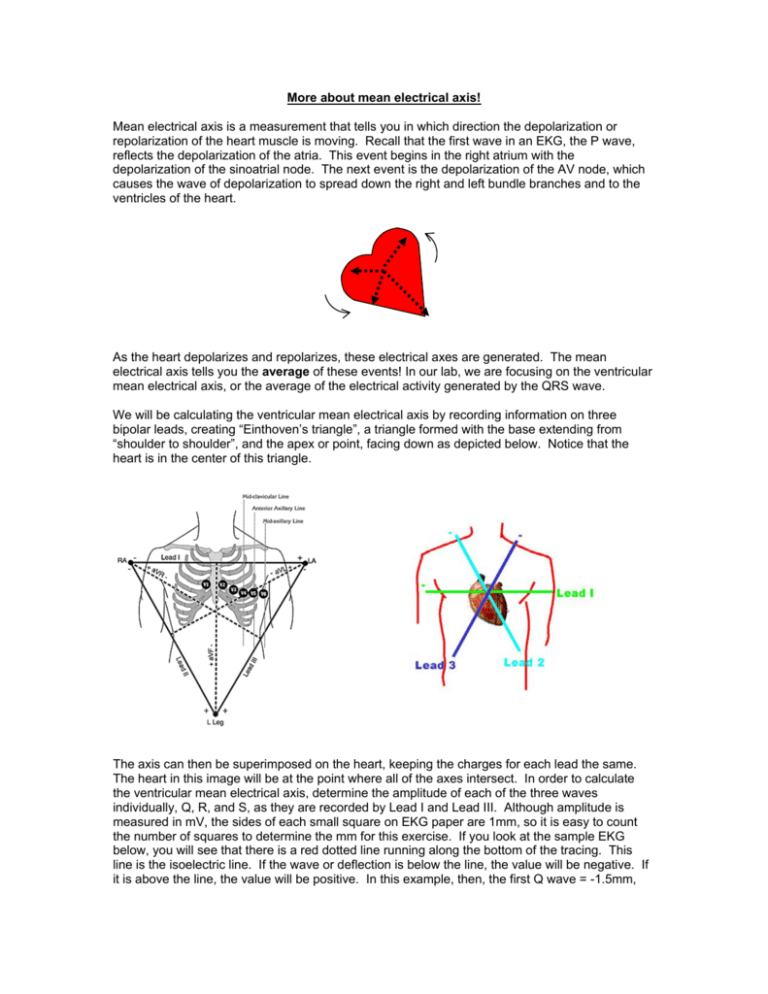about mean electrical axis!
advertisement

More about mean electrical axis! Mean electrical axis is a measurement that tells you in which direction the depolarization or repolarization of the heart muscle is moving. Recall that the first wave in an EKG, the P wave, reflects the depolarization of the atria. This event begins in the right atrium with the depolarization of the sinoatrial node. The next event is the depolarization of the AV node, which causes the wave of depolarization to spread down the right and left bundle branches and to the ventricles of the heart. As the heart depolarizes and repolarizes, these electrical axes are generated. The mean electrical axis tells you the average of these events! In our lab, we are focusing on the ventricular mean electrical axis, or the average of the electrical activity generated by the QRS wave. We will be calculating the ventricular mean electrical axis by recording information on three bipolar leads, creating “Einthoven’s triangle”, a triangle formed with the base extending from “shoulder to shoulder”, and the apex or point, facing down as depicted below. Notice that the heart is in the center of this triangle. The axis can then be superimposed on the heart, keeping the charges for each lead the same. The heart in this image will be at the point where all of the axes intersect. In order to calculate the ventricular mean electrical axis, determine the amplitude of each of the three waves individually, Q, R, and S, as they are recorded by Lead I and Lead III. Although amplitude is measured in mV, the sides of each small square on EKG paper are 1mm, so it is easy to count the number of squares to determine the mm for this exercise. If you look at the sample EKG below, you will see that there is a red dotted line running along the bottom of the tracing. This line is the isoelectric line. If the wave or deflection is below the line, the value will be negative. If it is above the line, the value will be positive. In this example, then, the first Q wave = -1.5mm, the R wave = +12mm, and the S wave = 0mm. If you add these up, you will get a value of +10.5 mm. If this is Lead I, you would then measure 10.5mm from the center along the positive axis, mark it, and draw a line perpendicular to that line as depicted in the image below. Lead I Repeat the same procedure for the Lead III deflections. Let’s pretend that your total for lead III is 7mm. Lead III Now, draw a line from point 0 to where the two perpendicular lines intersect. This line is your mean electrical axis! Values from -30mV to +90mV are considered normal. Those outside of this range indicate an abnormality. If you are using the BioPac system, to obtain the amplitude values for each wave, you would drag the cursor from the beginning of the wave to the peak. This should generate a negative value for any wave below the isoelectric line, and a positive value for those above the isoelectric line. For more information on mean electrical axis, check out these websites: http://www.cvphysiology.com/Arrhythmias/A016.htm http://courses.kcumb.edu/physio/ecg%20primer/ecgaxis.htm www.nursce.com/x_courses/1071/1071.htm











